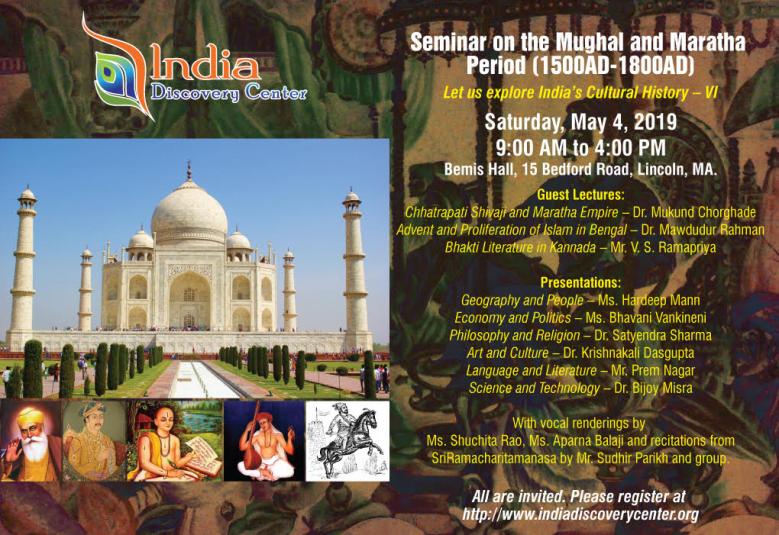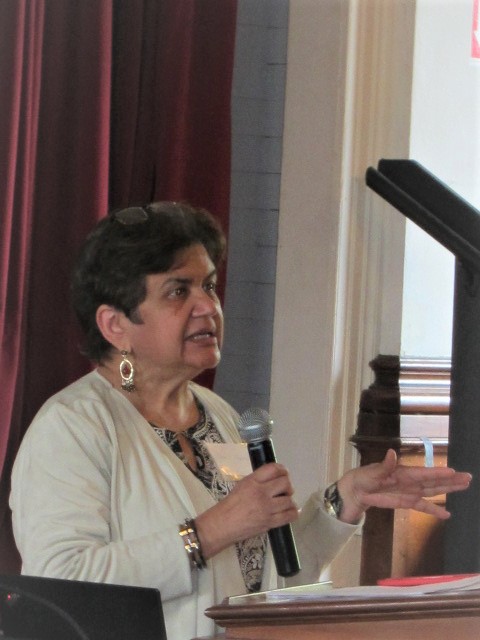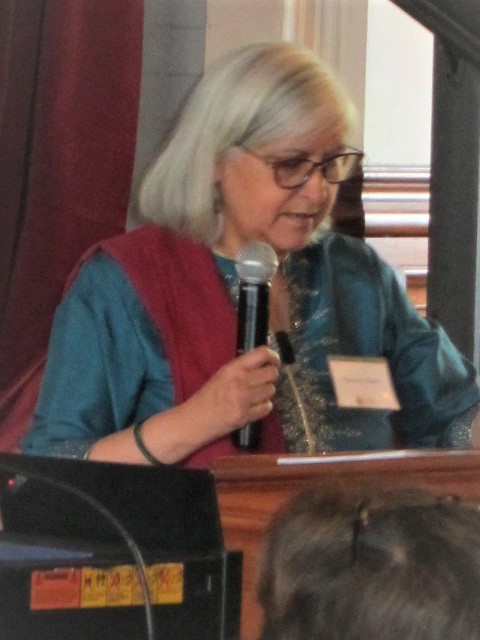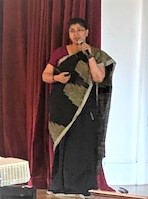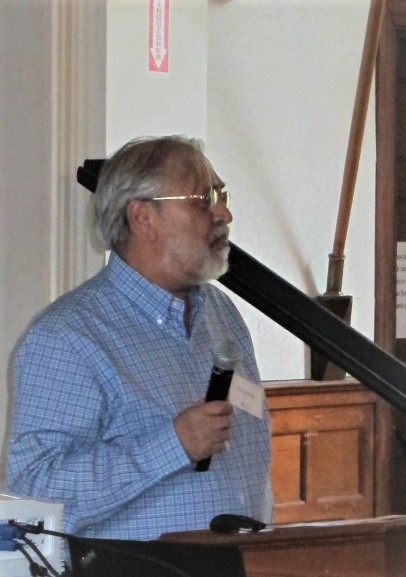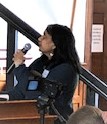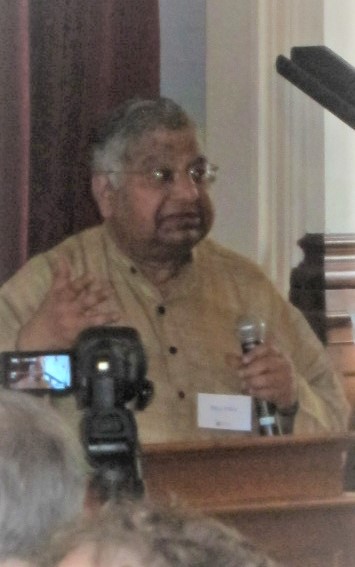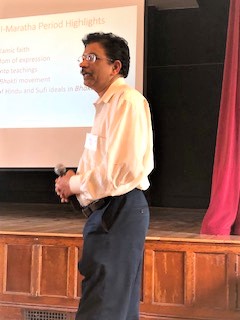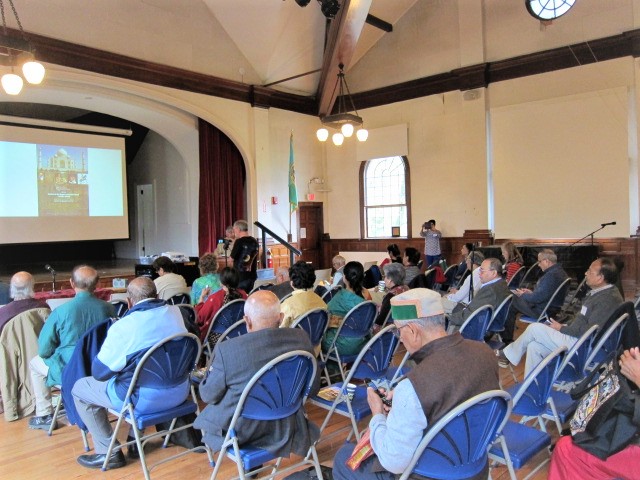Contribute
|
A Period Of Struggle And Resistance Mughal-Maratha Period (1500-1800 CE) (Part II) |
Prem Nagar
06/05/2019
A Period of Struggle and Resistance – Report (Part II) of the Seminar on Mughal-Maratha Period (1500-1800 CE) The survey seminars of India Discovery Center are organized on six tracks: (i) Geography and People, (ii) Art and Culture, (iii) Language and Literature, (iv) Philosophy and Religion, (v) Science and Technology, and (vi) Economy and Politics. The leaders for the tracks for the seminar on May 4 were Ms. Hardeep Mann, Dr. Krishnakali Dasgupta, Mr. Prem Nagar, Dr. Satyendra Sharma, Dr. Bijoy Misra md Ms. Bhavani Vankineni. Please check here for part I. This is the part II of the report. We sequence the tracks as presented in the seminar. Geography and People: Mughal brought much land in the peripheral regions to cultivation. There was abundance of produce, the exports were hefty. Some good quality lands were converted to grow cash crops like cotton, jute and sugar. The taxation was heavy. Personal freedom was curtailed through faith and scare. The society experienced fragmentation through caste divisions, most likely engineered through economic disparity. The administrative structure bred a new class of middle managers like Amirs (Local chiefs), Mansabdars (subdivision chiefs), and Nawabs (area chiefs), who became loads on the economy. Through frustration and despair, a large number of people chose the lifestyles of renunciates and sadhus. Faith movements labeled as Bhakti proliferated. Bhakti movement helped create a new strand of Indian literature. Invasions, turmoil and rebellions disintegrated the Mughal Empires. The Marathas gained early success, but eventually were overrun by the British. Q: Why did the agricultural expansion not affect all areas? A: The India was organized in semi-autonomous regions which were prosperous through their local economy. Besides agriculture, artisans and weavers contributed strongly to the economy. Q: How was the economy maintained? A: The regions were self-sufficient in food. Surplus was exported to other regions and were sent abroad. Language and Literature: Persian emerged as a language of choice replacing Sanskrit. It gradually evolved into modern Urdu, a hybrid language from Persian and Hindi. The court documents were formalized in Arabic script leading to madrasa school system to learn the new language and the script. The old system of traditional Indian system was dismantled in favor of new Quran-based system. Regional languages were patronized by the local rulers and good amount of poetic contributions emerged. Many new styles of poetic compositions were explored and popularized. There was strong development of devotional literature, particularly in the south. Most compositions were tuned to melodic renderings and the vocal rendering of lyrics became an art. There was strong Persian literature and Sikh literature. The Marathas promoted reflective poetry. The Persian influence led to romantic ballads, spiritual couplets and Sufi poetry. Q: Did the change of script to Devanagari affect the melody and meaning of the Arabic words? A: No study has been done. The script is used as symbols, the pronunciation is maintained as in original. Q: How did musical instruments support the melody? A: They did. There was massive research into percussion and string instruments. Many new instruments were designed and brought into use. Art and Culture: Mughals succeeded in creating a fusion of Indian workmanship with Persian design. Massive monolithic structures were instituted to signify the strength of the Empire and generate a sense of power. The life style was opulent and luxurious. Artists and artisans were commissioned to the pleasure of the royal demands. The period developed new kind of fusion in poetry, music and art. Calligraphy became an artisan’s work and architectural monuments were laced with calligraphic designs. Manuscript illustrations were done with care and ritualistic diligence. Culture of exhibitionism through processions and deity-oriented festivities became common. Massive people congregations for religious festivals were permitted and observed. Textile design and jewelry received royal patronage. New spices were introduced and food preservatives became the norm. Popular music traditions like kirtana and folk assemblies did flourish in the countryside. The Bhakti movement had a profound influence on literature, music, dance and festivals. The Marathas helped revive the Hindu traditions and the styles. Q: The onion type dome appears to be wide-spread in other Asian countries in later times. Did artisans move? A: We can’t say. The style appears Arabic in origin. Q: The traditional Kathak dance was restructured int the court-style performance. How was it engineered? A: It is difficult to estimate the process. Q: Is Gwalior fort built during the period? A: Yes. Economy and Politics: There was a massive increase in grain output because of the incorporation of new land to cultivation. Exports increased and India was opulent. It is shown that India contributed the largest fraction (25%) to the world GDP in 1700AD. Mughals levied heavy taxes in order to support the large Army that they needed to maintain the Empire. The taxation also needed tax-collectors, a whole middle managerial group emerged. This group became autocratic and usurped land arbitrarily to increase their own security. Villagers were displaced to work in the urban factories and industrial centers. Agricultural production gradually dwindled and there was starvation by 1800AD. The Marathas did succeed in displacing the Mughals from much of the interior but turned out to be bad administrators. Oppression and atrocities continued. India was divided into many small kingdoms with arbitrary liaison with the external rulers. The people and peasants suffered. The British took advantage of the situation and made inroads to occupy India. Q: What was the process of land redistribution and taxation? A: Land was cultivated by villagers as inheritance, the ownership was established through convention. The Moghuls declared all land belonging to State. They leased land for agriculture. They also distributed land to zamindars who became the tax-collectors. Gradually farmers lost their leased land through taxation. Tax was graded for different sections of people. Middle men prospered at the cost of the farmers, who were displaced. Q: What was women’s role in society? A: Women had little influence in the political system, but were active in education and maintaining the tradition. Shivaji’s mother was instrumental in shaping his future. Philosophy and Religion: Islamic faith was imposed on people through coercion and terror. Freedom of expression was strongly curtailed. Vedantic teachings of equality of man was replaced by a strongly faith-based hierarchical structure. Massive sectarianism developed as a defense to gain religious freedom. Devotion to cults and personal deities became the basis of the new Bhakti movement. The movement helped evolve life style changes, regimentation and conservatism. Faith and cultural beliefs got reflected in the economic structure and led to an Emperor-crowned political philosophy. The local rulers followed suit by declaring arbitrary divinity to hold on to power. The casteism and hierarchical structure in the society became oppressive leading to segregation, untouchability and deprivation. While Sikhism preached universality, the Marathas tried to sustain the Brahminic dominance. Q: Were there statues or monuments erected to commemorate the saints? A: Temples and monuments are seen. Many are likely to have been destroyed. The saints have their local celebrations. The writings are preserved through cultural celebrations. Living art performances are common even now. Science and Technology: Development in science was not as prolific as the previous period. Astrological calculations were supported and a hybrid system of calculating astronomical events developed. A Hindu King Jaisingh established five observatories in different cities to detect astronomical phenomena. The mathematics of differentials did lead to the development of differential calculus a hundred years prior to the time of Newton. Chemistry developed through dyes, colors, perfume industry and glues. Musical melodies were supplemented with the experiments on sound production and evolution of new instruments, wind, percussion and string. Vocal music was replaced by instrumental music in festivals and rituals. Architectural designs led to massive civil engineering projects using a variety of materials and engravings. Grout technology was perfected. Military gunpowder and weapon technology became royal obsessions. The Marathas spent time in developing naval science and oceanic warfare. Plant extracts and dried herb powders were experimented to be used as medicine. Q: What was scientific research supported? A: Many regional kings supported independent creative work as a part of traditional support. The Emperor commissioned art displays but the grandeur of the production was less sophisticated than the improvised self-willed design. Q: How was Newton’s work accepted in India? A: Scientific research stalled after sixteenth century. Emphasis was on civil engineering, gun powder and marine craft. Q: Why the scientific contributions are not so well known? General comments: There are efforts in the public-school system to introduce more India-related curriculum. A teacher in the audience expressed the need of more picture books and more resources on India. Others commented on the need of large-scale education to understand and assimilate. Many thanked the organizers for the seminar and the information exchange. The next seminar in the series “Let us Explore the Cultural History of India†is scheduled for November 2, Saturday in Bemis Hall. It will cover the period from 1800AD to 1947AD when India was declared free from the foreign rule. India Discovery seminars are organized by Indian Discovery Center, a local non-profit organization based in Lincoln, MA. The presentation and lecture slides including the videos are gradually posted in the organization website
A: India is recovering from the era of colonialism. Suppression of freedom also suppressed the language and created a culture of dependence and inferiority. It is changing slowly.
You may also access this article through our web-site http://www.lokvani.com/
